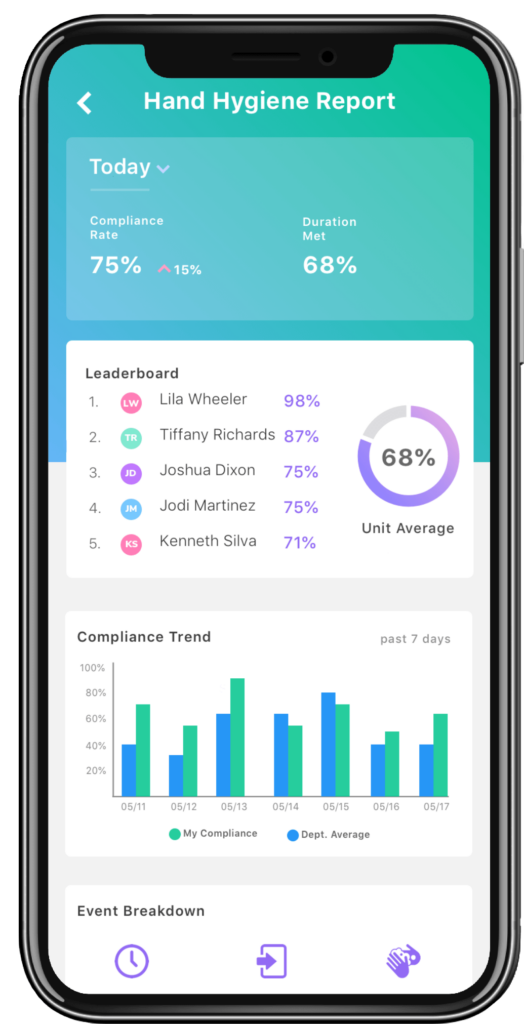Improving Patient Care Through Nurse Wellbeing
Taking care of those who care for patients is becoming a higher priority for many healthcare organizations. Efforts to improve nurse wellbeing are in response to increased evidence of fatigue and burnout among these care providers, conditions that lead to staff turnover, medical errors and even incidents of suicide.
Hospital leaders addressing these challenges have found a correlation between nurse engagement and satisfaction. Gallup research shows that more engaged nurses produce better quality and safety results (Ratanjee & Drenkard, 2019) on measures such as hand hygiene compliance and rounding effectiveness. Higher nurse engagement is statistically related to less patient complications, lower mortality indexes, and 41 percent fewer patient safety incidents. This research also shows that hospitals with the least engaged nurses pay $1.1 million more per year in malpractice claims than do hospitals with highly engaged nurses.
To increase employee engagement, hospital leaders must demonstrate their commitment to employee wellbeing. According to Gallup’s Workplace service, employees respond positively when they asked their opinion and when they are recognized for doing the right things (Ratanjee & Drenkard, 2019).
Electronic monitoring gathers data that can encourage caregiver engagement in hand hygiene

Vitalacy has found that nurses are very willing to engage in activities that make patient care safer, such as hand hygiene. Through the use of electronic monitoring, the Vitalacy Patient Safety Platform is designed to improve hand hygiene compliance and the effectiveness of rounding and workflow, as well as to monitor for signs of nurse fatigue.
The platform works by visually mapping the movements of care providers through the course of a shift through the use of Bluetooth-enabled wristbands worn by the providers. The wristbands communicate electronically with sensors installed throughout the unit; these sensors gather data on the movements and locations of each staff person wearing a wristband, as well as data on hand hygiene compliance, rounding effectiveness, miles walked, length of shift, and more.
While providers sometimes at first view this activity mapping as intrusive, they become engaged in using it after they see the correlation between improvements in their patient care activities and patient safety results. For example, as hand hygiene compliance improved at a Vitalacy hospital client, incidents of hospital-acquired infections decreased (Vitalacy, 2019).
The visual maps created by the data also lead to important conversations about workflow, rounding and staffing. These discussions lead to improvements benefitting both nurses and the patients they serve. For example, improved rounding and reduced nurse fatigue often results in less healthcare-acquired conditions such as falls with harm, pressure ulcers, deep vein thrombosis, and harm caused by medical errors.
The costs of fatigue and burnout are high
In the United States, nurse turnover stands at 17 percent, causing quality, safety and financial issues for hospitals. The average hospital loses $4.4 million to $6.9 million each year due to turnover. When a bedside registered nurse decides to leave, the average cost to replace her is estimated at more than $50,000 (NSI, 2019). Care providers suffering from fatigue and burnout are more likely to make a medical error leading to patient harm (Hall, 2016).
The Laura Hyde Foundation, established by the family of naval nurse Laura Hyde who died by suicide in 2016, recently began a campaign in the United Kingdom to improve wellbeing among frontline care providers. The campaign features a badge for care providers to wear with the words, “Ask me how I am. . . and make my day.” (Ford, 2019). Taking care of others can be very stressful, no matter the setting. Starting a conversation with nurses about their wellbeing can lead to higher provider satisfaction and better results for your hospital and your patients.
“Ask me how I am. . . and make my day” is excellent advice for hospital leaders, advice with many applications. Whether through spoken word or more technically sophisticated means, any method of gaining insights into how to improve nurse satisfaction and engagement will result in better patient safety. The key is starting the conversation with care providers, the first step toward demonstrating that you care for their wellbeing and the wellbeing of their patients.
Request a demo of Vitalacy’s Automated Hand Hygiene Monitoring Solution today!
References
Ford, M. New badge launched to spark conversations for nurse wellbeing. Nursing Times, Nov, 20, 2019.
Hall, LH, et al: Healthcare staff wellbeing, burnout, and patient safety: a systematic review, PLoS One, 2016;11(7): e0159015. Published online July 8, 2016.
Ratanjee V & Drenkard K. 3 strategies hospital leaders can use to get rounding right. Gallup Workplace, Nov. 11, 2019.
Vitalacy, Inc. Finding new ways to prevent healthcare-acquired infections and conditions. 2019.
Author
-

Vitalacy is committed to reducing patient harm in healthcare through better hand hygiene and patient safety solutions. Bluetooth-enabled smart sensors and wearables help improve outcomes and Leapfrog Hospital Safety Grades.
View all posts




